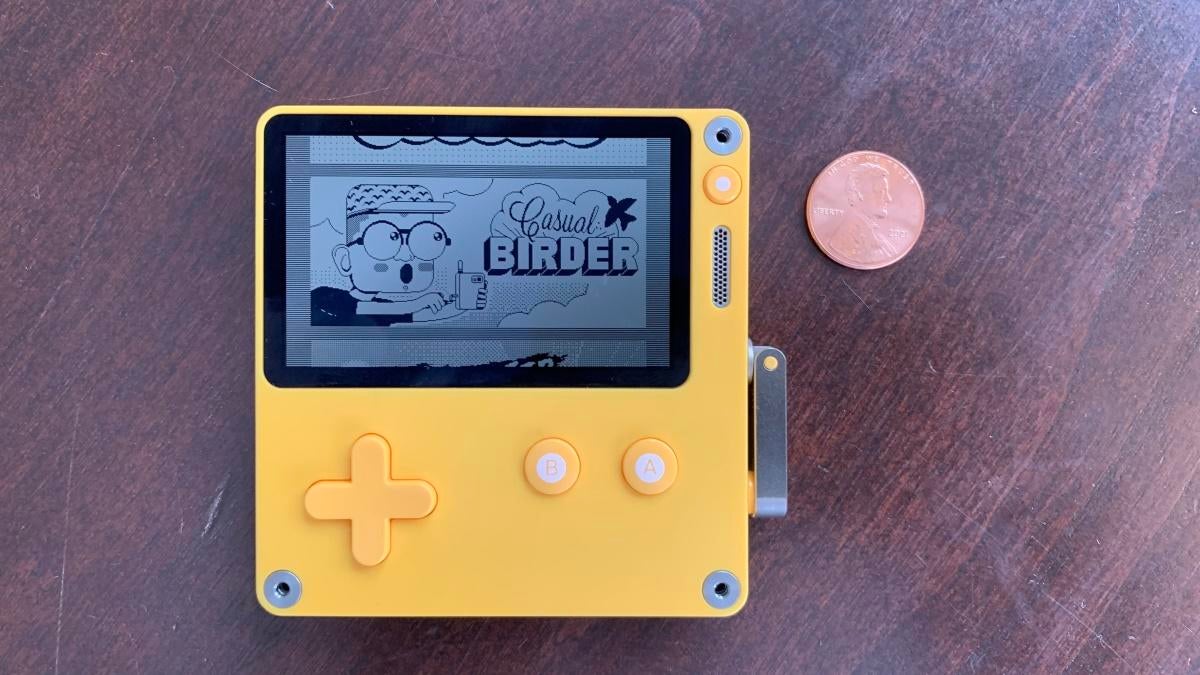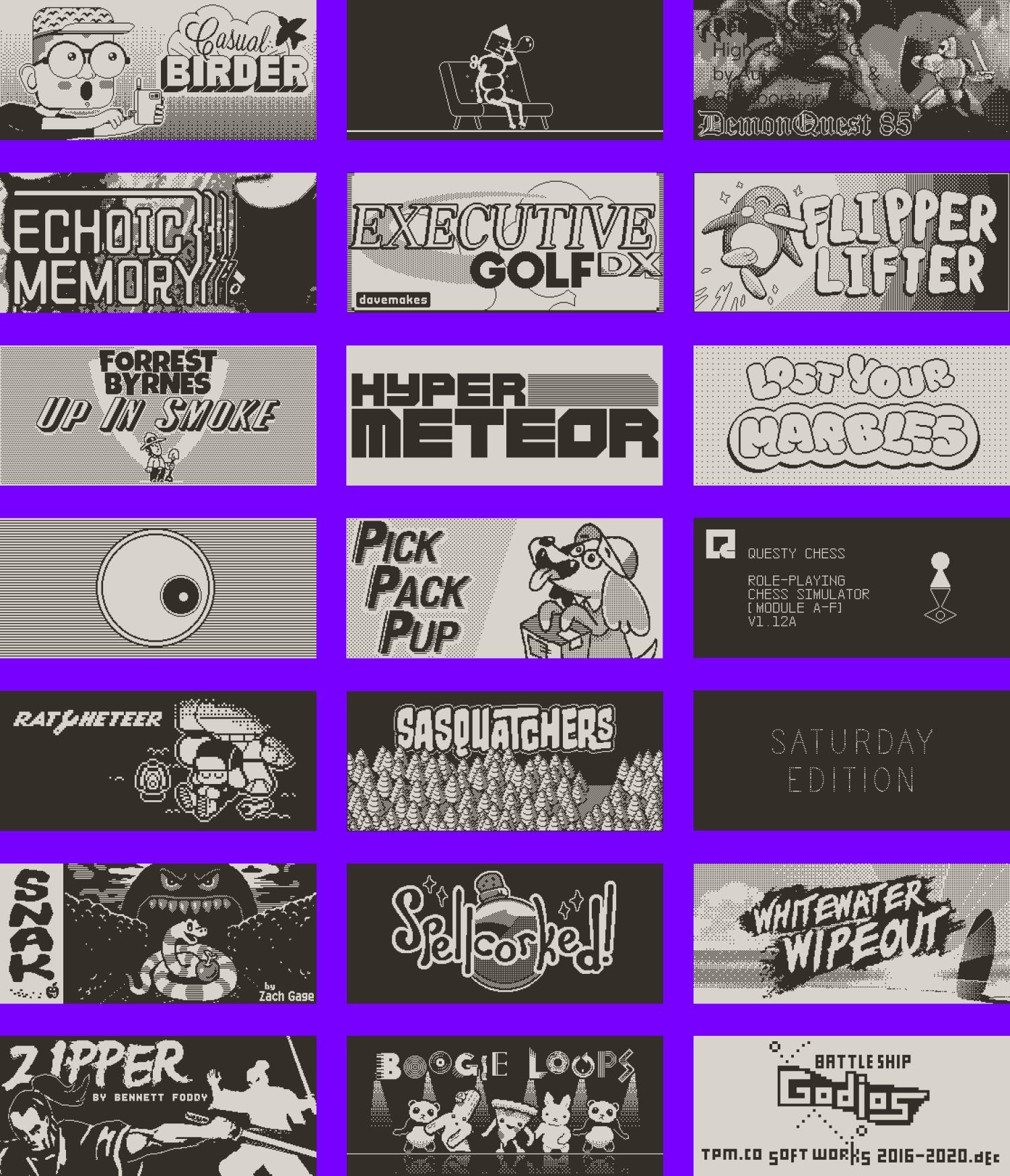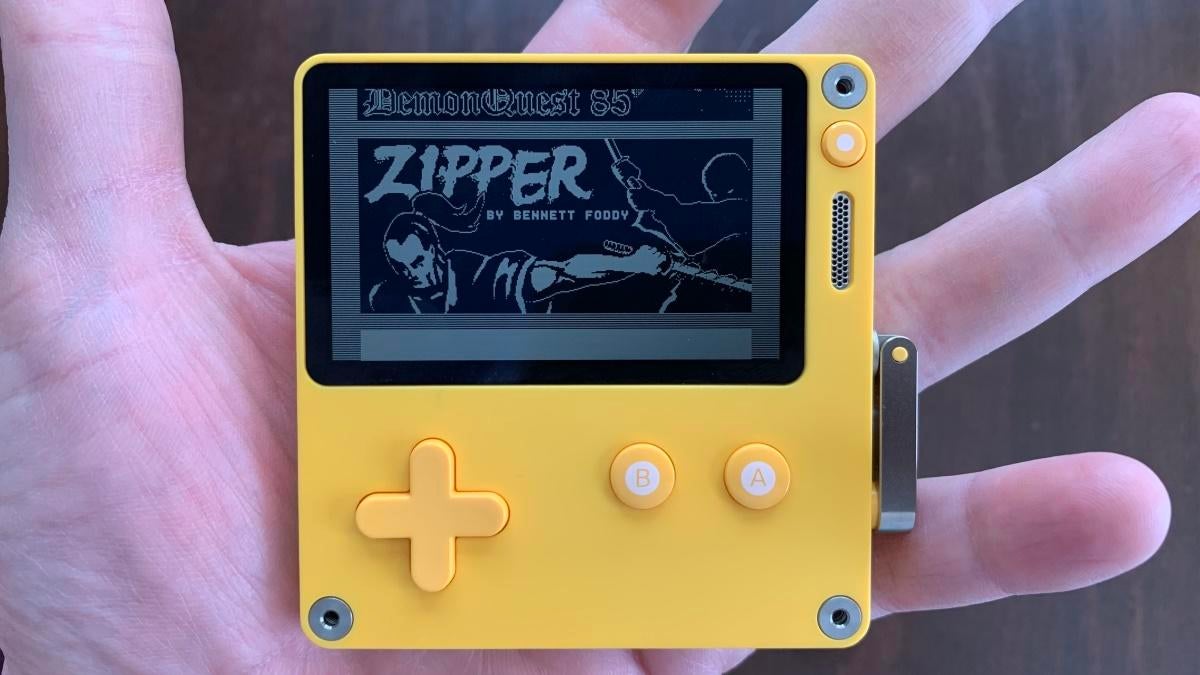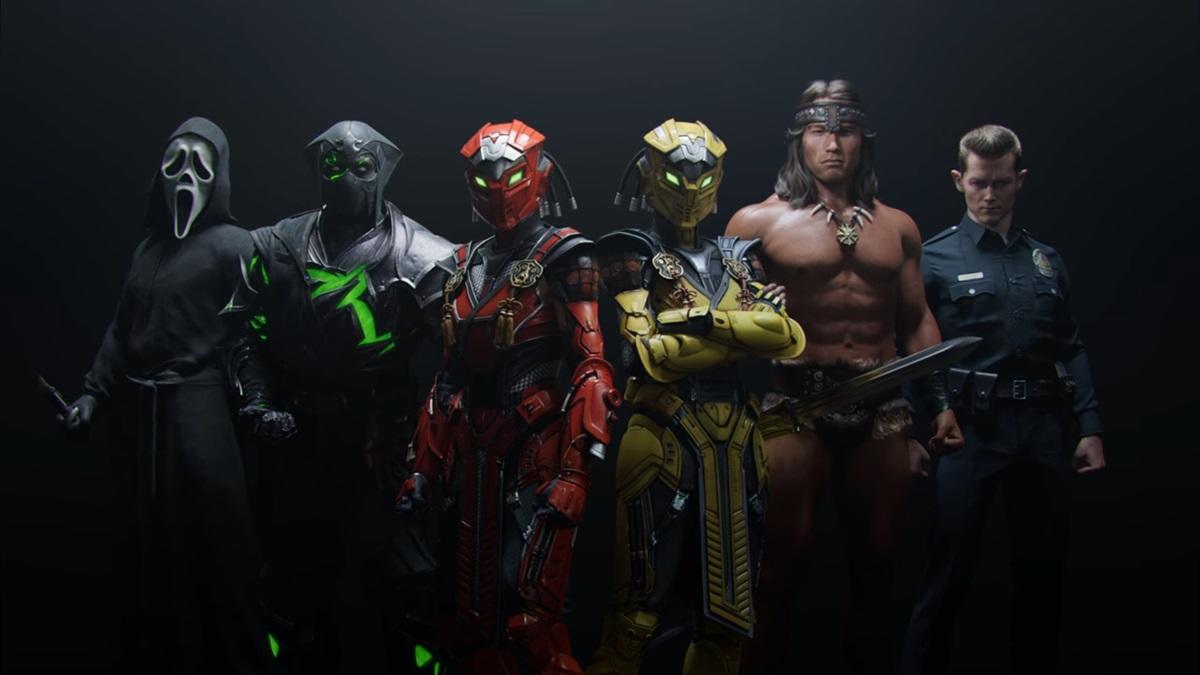Playdate Review: Embracing the Unusual
It's an understatement to call the Playdate unusual. The new handheld game system from Panic isn't just a game system, as it also comes packed with a "season" of video games that release over time. It's incredibly small and the games feel like they have more in common with calculators than with modern consoles. And it has a hand-operated crank attached to it that's integral to the function of the device. Any single one of those might be odd enough to make the system interesting, but after spending a couple of weeks with the device, all of them together make the Playdate truly stand out.
It also helps that the design of the Playdate overall is very slick, thanks in no small part to the folks at Teenage Engineering. The company is known for smart, compact electronics, and the design of the Playdate is no exception. If there's one thing Teenage Engineering is best known for, however, it is synthesizers, so it should come as no surprise that the Playdate sounds great and has impressive volume to it.

The details on the screen are also quite sharp, which is good because of how small the overall size is at 400x240. Thankfully, the various video games are absolutely designed with this limitation in mind, so it never feels like a problem so much as a compromise for what the Playdate is and does. It just is… small. It's a small machine with a small screen that plays small video games.
That said, the biggest problem with the screen is that it requires the correct lighting. As the official site notes, it's not backlit, is super reflective, and while it does look way more amazing than you're probably imagining, it also just doesn't function in the same way as most portable console screens folks have likely become accustomed to in recent history. In order to get the most out of the Playdate, you're almost certainly going to have to sit in a specific way or angle yourself or the device or both in some situations.

Playdate's included games in its base price roll out over the course of a season with two available immediately upon startup and two more every week for a total of 24 different video games over 12 weeks. 21 of these have already been officially revealed, and part of the intrigue with the system is not necessarily knowing what's going to drop next, but for the sake of accurately discussing what the price point actually gets a customer, be warned that I'm about to get into a small amount of detail.
The video games included in Season One range wildly in terms of length, complexity, and quality. Those aren't exclusive, however, and "quality" here starts at "pretty good" – which makes sense as it seems fairly unlikely that Panic would have put these in the first season otherwise. There is everything from the brief, relatively simple beat-crafting Boogie Loops developed by May-Li Khoe and Andy Matuschak to the extended, Zelda-esque adventure Ratcheteer developed by Shaun Inman, Matthew Grimm, and Charlie Davis. The odds are good that anyone that picks up a Playdate with full knowledge of what it is will find a couple of gems that appeal to them.

Of everything about the Playdate, the biggest question mark I had prior to actually holding it in my hands myself was the crank. I suspect that will also be the case for most folks, with the biggest questions being: Does it feel extraneous or somehow useless? How does it actually feel to, well, crank? What does even having the option to crank add to the experience? To briefly answer those questions: No, good, and shockingly quite a bit.
To answer those questions less briefly, the crank is generally pretty integral to the Playdate experience. Each game uses it differently, with some, like Crankin's Time Travel Adventure developed by Keita Takahashi, Ryan Mohler, Matthew Grimm, and Shaun Inman, building the entire experience around how much you're cranking in one direction or the other. Others instead tie the crank to scrolling through pages or backgrounds or some kind of simple, secondary mechanic. No two Playdate games are exactly alike, and each developer seems to have decided how much they want to play with something that's so unique and gone from there. There are certainly games included in the first season where the crank sometimes feels superfluous, but for every video game like that, there's one that manages to attach some truly impressive mechanics to it.

At this point, it remains to be seen just how many people will actually make video games for the Playdate. The SDK is free to download, and the Pulp game maker for making games is accessible via a web browser. That said, adding other, non-Season One games to the Playdate is as simple as uploading the files to your Playdate account online and letting the machine itself download them. It's currently unclear whether Panic will ultimately end up selling a Season Two worth of games or open its own platform for folks to sell Playdate titles.
The future of the Playdate is, to be blunt, uncertain. That isn't to say Panic won't support the system to the best of its ability, but there's no telling how the general public is going to react to it. As an unproven product with an entirely new way to make and distribute games, there's every possibility that it doesn't get the response Panic is hoping for or significant development outside what's already been made for the system. It can be hard to recommend anything truly new.
And yet, I must. At $179, the Playdate is certainly not cheap, but neither does it feel cheap. And even if the vast majority of games that end up made for the Playdate total are included in Season One, packaged with the console, it's worth it. Ratcheteer is the best game I've played so far this year. Panic states on its official website that it made Playdate just for fun, which is a clever turn of phrase because it makes it sound as if the company made the thing on a lark – which, let's be honest, it probably did. But also, having spent many hours with it now, I can confirm that the Playdate genuinely is designed, built, and made just for fun as I had plenty of it.
A Playdate review unit was provided by Panic for the purpose of this review.




